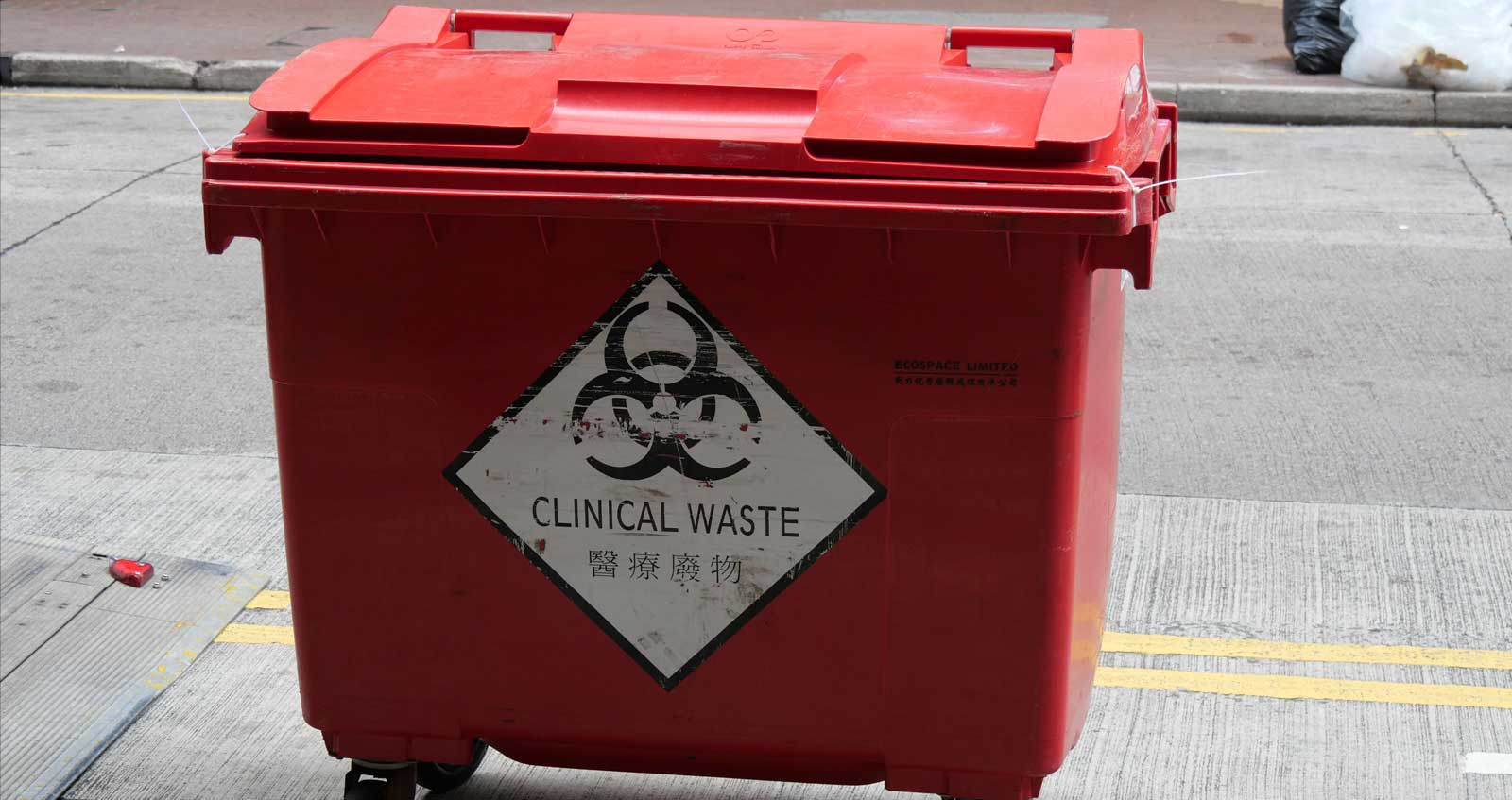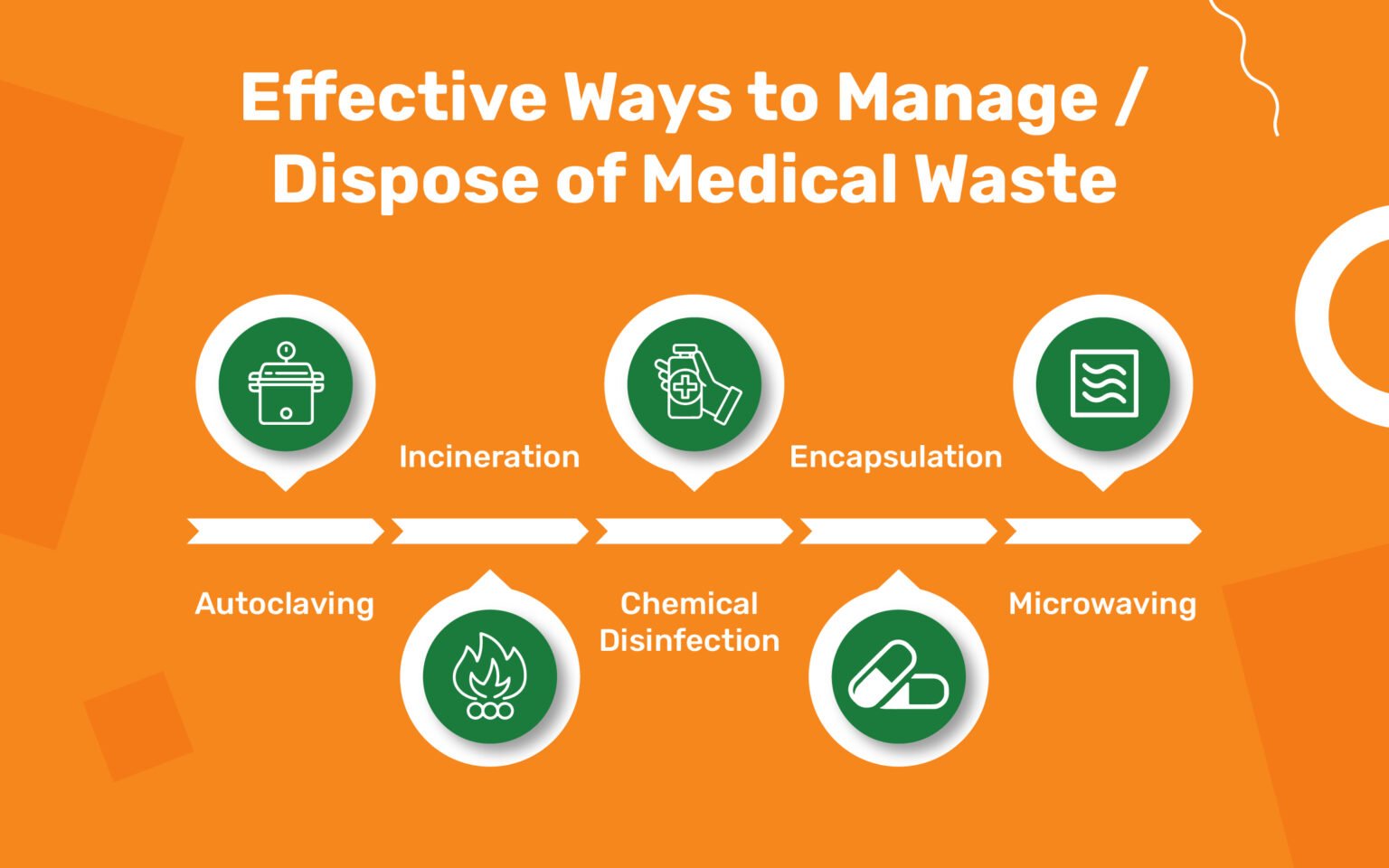Defending Wellness: Introducing the Essence of Expert Medical Waste Removal
Defending Wellness: Introducing the Essence of Expert Medical Waste Removal
Blog Article
Effective and Eco-friendly Medical Garbage Disposal Solutions
In the ever-evolving area of medical care, the issue of medical waste disposal remains a subject of extremely important importance. As medical facilities, facilities, and other medical care facilities strive to supply quality client treatment, they have to also deal with the obstacle of successfully and responsibly disposing of their waste.
Waste Segregation Practices
Effective waste partition techniques are vital to make sure the proper and safe disposal of medical waste. Medical waste, that includes products infected with possibly infectious substances, should be handled in a manner that lessens the threat of injury to both public wellness and the setting. Correct waste partition plays a crucial role in achieving this goal.
Waste segregation involves the splitting up of various kinds of waste based upon their features and possible threats. This procedure makes sure that each kind of waste is dealt with and taken care of suitably (medical waste disposal services with WasteX). It starts at the factor of generation, where health care centers must have designated containers and containers for different waste groups, such as sharps, contagious waste, pharmaceutical waste, and non-hazardous waste
By segregating clinical waste at the resource, doctor can prevent cross-contamination and minimize the risk of direct exposure to infectious representatives. This practice likewise facilitates the recycling and healing of particular materials. Setting apart and recycling clean plastics and glass minimizes the demand for raw products and lessens the ecological effect of clinical waste disposal.

Autoclaving and Sterilization Strategies
In order to ensure the correct and safe disposal of medical waste adhering to reliable waste segregation practices, healthcare centers must utilize autoclaving and sanitation methods. Autoclaving is a commonly utilized method that makes use of high-pressure heavy steam to sterilize clinical waste.
This involves dealing with the waste with chemicals such as ethylene oxide or hydrogen peroxide, which kill microbes by interrupting their cellular structure. It is essential to keep in mind that chemical sanitation calls for correct handling and disposal of the chemicals made use of, as they can be unsafe to human health and the setting if not taken care of properly.
On-Site Waste Therapy Systems
Health care centers have actually carried out on-site waste therapy systems to deal with the disposal of clinical waste in a secure and effective fashion. These systems supply a affordable and hassle-free option for handling medical waste created within the facility. On-site waste therapy systems make use of various modern technologies to deal with and dispose of medical waste on-site, minimizing the need for transportation to off-site facilities.
One commonly utilized on-site waste treatment system is the microwave innovation. This modern technology uses microwave energy to decontaminate and sanitize medical waste, lowering its quantity and rendering it safe for disposal. An additional system is the chemical sanitation innovation, which entails dealing with clinical waste with chemicals to kill microorganisms and lower its dangerous nature. This method is specifically effective for fluid clinical waste.
They eliminate the threat of medical waste being mishandled during transportation, minimizing the capacity for contamination and exposure to damaging materials. On-site treatment systems minimize the total environmental effect of medical waste by decreasing transportation and the need for land fill area.
Recycling and Repurposing Campaigns
As medical care centers pursue sustainable waste administration techniques, they are significantly discovering recycling and repurposing campaigns as a way of reducing the ecological impact of clinical waste. Recycling and repurposing initiatives entail locating innovative methods to recycle or transform clinical waste into brand-new items or materials. This not only helps to minimize the volume of waste that Your Domain Name winds up in burners or garbage dumps but additionally minimizes the usage of raw materials and energy required for producing new items.
One instance of recycling in the healthcare field is the reprocessing of single-use medical devices. These gadgets, such as surgical instruments or catheters, are typically thrown out after a single use. Innovations in technology and stringent sanitation procedures have actually made it feasible to securely tidy, disinfect, and reuse these gadgets numerous times. This not only lowers the quantity of waste produced but also saves healthcare facilities significant prices related to buying brand-new devices.
An additional recycling initiative entails the recycling of plastic containers, such as medication containers or syringe coverings. These containers can be collected, arranged, and sent out to reusing facilities where they are processed, thawed down, and transformed right into brand-new plastic items. This helps to save sources and lower the demand for virgin plastic production.
Along with reusing, repurposing initiatives entail finding alternative uses for medical waste. As an example, shredded paper waste from clinical documents or product packaging materials can be repurposed as bedding material for animals or as insulation material (medical waste removal services). Organic waste such as food scraps from healthcare facilities can index be composted and utilized as plant food in gardens or farming areas.

Renewable Resource Solutions
One effective technique to mitigating the environmental effect of health care procedures entails implementing renewable resource solutions. Healthcare centers, such as clinics and medical facilities, eat substantial amounts of power for numerous objectives, consisting of lighting, home heating, cooling, and operating medical tools. By transitioning to renewable energy resources, these facilities can significantly lower their carbon footprint and add to a more lasting future.

Applying sustainable power options in health care facilities not only decreases greenhouse gas emissions but additionally uses long-lasting cost financial savings. While the preliminary investment in sustainable power infrastructure might be higher, the lasting operational prices of renewable resource systems are dramatically lower compared to typical fossil fuel-based energy sources. In addition, renewable power systems are reputable and can provide a stable and continuous power supply, guaranteeing constant healthcare solutions also throughout power blackouts or emergencies.
Conclusion
In verdict, carrying out ecologically pleasant and efficient clinical waste disposal services is crucial for keeping a lasting health care system. By adopting waste segregation practices, autoclaving and sterilization methods, on-site waste treatment systems, recycling and repurposing efforts, and sustainable power remedies, health care facilities can dramatically lower their ecological impact.
It starts at the factor of generation, where health care facilities need to have assigned containers and containers for various waste categories, such as sharps, infectious waste, pharmaceutical waste, and non-hazardous waste.
In order to ensure the risk-free and appropriate disposal of medical waste adhering to efficient waste partition techniques, health care facilities should employ autoclaving and sterilization strategies.Healthcare facilities have actually executed on-site waste therapy systems to deal with the disposal of medical waste in a effective and secure way. On-site waste treatment systems make use of various innovations to deal with and dispose of medical waste on-site, decreasing the requirement for transportation to off-site facilities.
As healthcare centers aim for lasting waste monitoring techniques, they are increasingly discovering recycling and repurposing initiatives as a method of reducing the ecological influence of clinical waste. - medical waste removal
Report this page